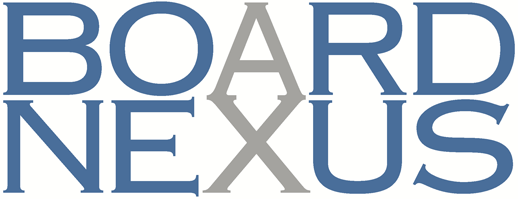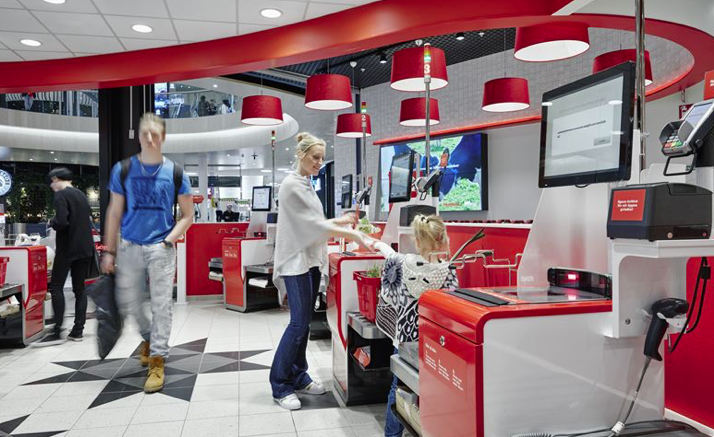Digitalization should not be given special treatment – it needs to be integrated into the company’s ongoing operations. That’s the opinion of Anna Benjamin, board member and one of the main owners of Swedish shop equipment company ITAB Shop Concept. Digital support for shopping is evolving rapidly, and Benjamin views digitalization as business development. No more, no less.
ITAB is a Swedish listed company that offers complete concepts for retail chain stores and is a market leader in Northern and Eastern Europe. Digitalization is crucial for ITAB’s business: the company offers digital systems that create favourable shopping conditions, through the use of video and voice messages, optimal lighting, music and even scent.
Board member Anna Benjamin is the daughter of ITAB’s late founder, Tord Johansson. She has a background in retail, having held positions at the Swedish retail chain Ica, and she has worked as a controller and as a management consultant. Today, as well as being a director of ITAB, she is also on the boards of several other companies, including Xano Industri, (which specializes in mechanical products), and Ages Industri (which makes precision components for vehicles), where she is also a major shareholder.
No digital expert
The ITAB board does not have a digital specialist, but Benjamin says that she often raises digitalization, sustainability and diversity issues. “It comes naturally to me. ITAB is a traditional industrial company and it’s important for us to follow developments and keep evolving. With a background in business development, I like to see what needs to be improved and what can be done better moving forward”.
The board of ITAB follows digital initiatives closely. “We’re an entrepreneurial company”, continues Benjamin. “We want initiatives to come from within the organization. Ideas can be tested by the organization, but before they go live they need to be approved by the board”.
From tech to customer driven development
An important role of the board is to create the right conditions for cross-fertilization of ideas and innovation across the business group. “If someone does something good in Russia, the board needs to make sure that our business in the UK can make use of this too”, she says.
ITAB has an annual turnover of around 600 million euros. Previously, the company has invested in large technology driven innovation projects. Big investments in future technology require huge liquidity, and it may take many years before the innovations can provide return on investment.
Benjamin mentions AirFlow as an example: an automated check-out system where every item is registered as it is taken off the shelf and verified when put in the shopping trolley. The customer can then proceed directly to the payment terminal. While AirFlow is far ahead technologically, sales have not met expectations.
“The AirFlow project teaches us that we should not sit on our own and develop something that we think will be good. We cannot run ahead of our customers. An innovation must create business”, Benjamin says, “There has to be a client who is willing to pay for it.”
The biggest challenge is to prioritize
“To be relevant”, she continues, “we need to keep moving. Consumers are moving towards e-commerce, and clients who own physical stores are unsure of how to act. Retail is a difficult industry to navigate right now, but standing still is not an option.”
Anna Benjamin promotes close co-operation with the company’s clients – the major retail chains – to find out what investments and what technology they are ready for. “I think we will work even more closely with our clients and involve customers in our projects. Historically, ITAB has always been customer driven. That’s how we’ve grown.”
“There is a danger that digital is assigned a special position”, Benjamin argues. “You might say, ‘we just have to do it’ when it comes to digital projects, but they should fulfil the same requirements as other investments.”
“There is so much you can do, but everything costs and money is limited. We can’t put all our money into digital. We also need new machinery and other investments. During our strategy days, the board has to decide approximately what investments we need to make in traditional production and in digital.”
Digital investments – a learning experience
“You have to consider the alternatives: What else could we get for this money? You can’t just plough on with digital investments. You need to be aware that you are always saying no to something else. The board can do more on this.”
Apart from her roles on the boards of ITAB, Xano and Ages, Anna Benjamin is also an investor specializing in small tech companies. “It’s an interest of mine. I’m creating a portfolio, building companies and making money. But it’s also a way for me to get closer to digitalization, to learn and understand technology better”, she explains.
Owners are in close dialogue with the CEO
To ensure that ITAB follows digital developments, Benjamin monitors changes in the industry and keeps track of competitors. When she thinks something needs to be done, she sows a seed with the rest of the board. “If that doesn’t work, it may lead to tougher discussions. The timing determines how hard you need to push. You need to have the board with you when you implement changes.”
Anders Moberg, formerly CEO of IKEA, has been a board member of ITAB since 2011, and he was elected chair in 2018. A board evaluation in early 2019 resulted in a clear picture of what skills need to be added to the board. Digital specialists are not on the list of requirements however, because there is a risk that they will not be able to contribute in other areas.
“Board members need to understand our business. We have a board member who has worked with development at Ericsson and with telecoms, which gives us different perspectives. When it comes to details, the board has to bring in help to get the right information for decisions. When we need it, we invite external competence to our meetings. We are not afraid to do that” Benjamin says.
In some of the companies in which she invests, she is also a board member. Her experience is that working on the boards of large and small companies is mutually beneficial. “It’s two separate worlds, for better or worse. The young companies are much better at questioning old truths. But they tend to only look ahead and lack experience and history. The old companies, on the other hand, often look too much to the past.”
As an owner and board member, Anna Benjamin has dual roles within ITAB. The two largest shareholders of ITAB are also on the board: her brother Petter Fägersten and Fredrik Rapp, whose father, Johan Rapp, was an entrepreneur and co-owner of ITAB. There is no formal owners’ council, but the three shareholders who sit on the board meet the CEO regularly to discuss changes and anchor decisions.
“Our dialogue with the CEO is very open. It’s good if we have discussed something beforehand, but the decisions are made in the board room”, she explains. The board members are easily accessible for the CEO and they have a close dialogue. “We call each other if anything is unclear. That goes both ways. If we’re to make demands on him, his assignment has to be clear.”
Do you have a bigger say on the board, being an owner?
“I think that all board members feel responsible, but as an owner your responsibility runs deeper. It’s a very long-term commitment. I think that makes you spend more time on the work of the board and have a closer dialogue with the CEO.”
In autumn 2018, ITAB announced an efficiency program with major cost cutting meaning that 400 employees had to leave. “When times are hard, tough decisions need to be made”, Benjamin says. “The owners need to step up”.
Strategy requires continuous evaluation
The ITAB board meets five times per year, and additionally has two telephone meetings. Once a year, it holds a two-day strategy meeting with exercises. “That’s when we set the foundations for our strategies, including digital, and decide in what direction we want to move. We evaluate projects and set a strategy for what we want to do internally and what we need to build partnerships for”, Benjamin continues. “The board has decided not to treat digitalization as a separate strategy, since that’s not how it’s regarded within the company.”
She stresses that the strategies need to be reviewed regularly, not just once per year. There is a lot of digital action within ITAB, and the board needs to discuss strategy at every meeting.
Change of focus from past to future
“The key is how you run the board meetings and how they are planned. If the norm is to spend 80 per cent of the time on history – finances and budget for example – then it should be the opposite. The board should raise the most important issues, demand the right information and then spend the rest of the time looking forward. What are our clients doing? Our competitors? What’s happening out there?”
When Anna Benjamin and other ITAB board members find a good working process elsewhere, they bring it to ITAB. One example is that the board has introduced time for reflection on the agenda at the end of each board meeting, with feedback on positives and negatives from the meeting.
“No matter what role you have in a company, you always see something that someone does better. You should be inspired by that.”

